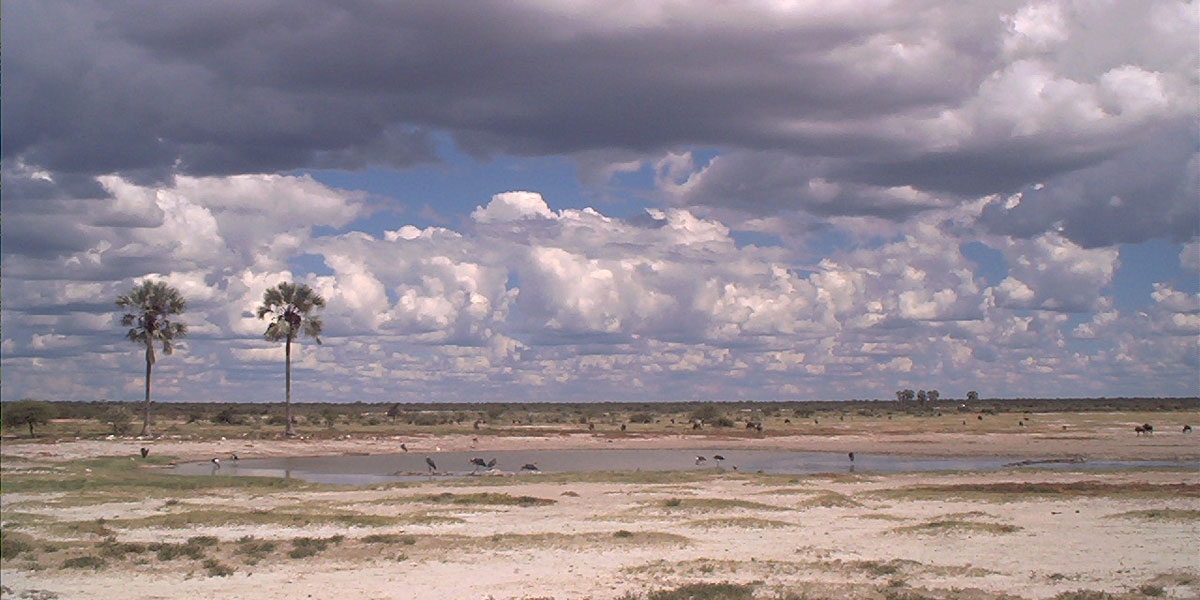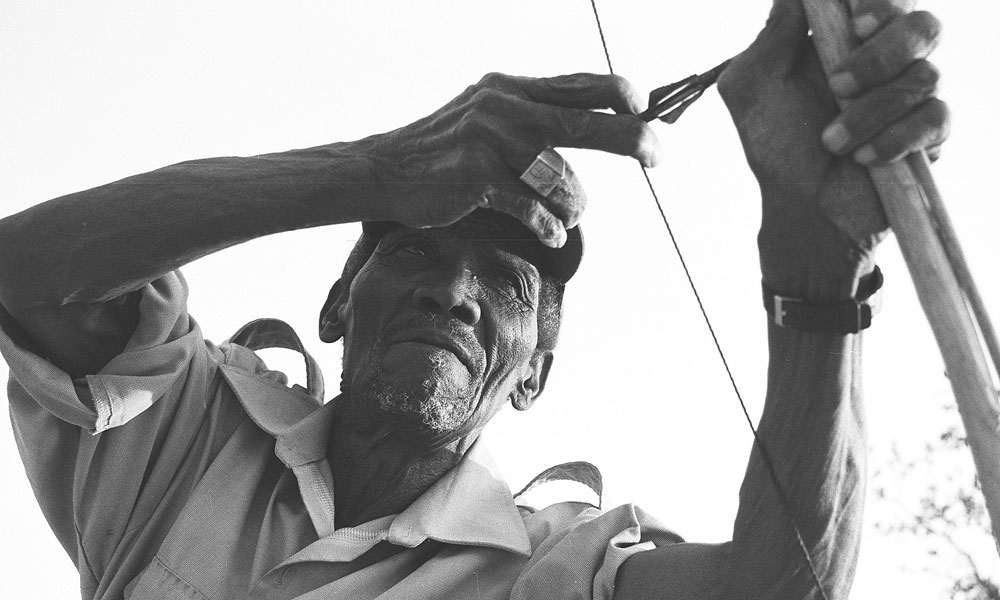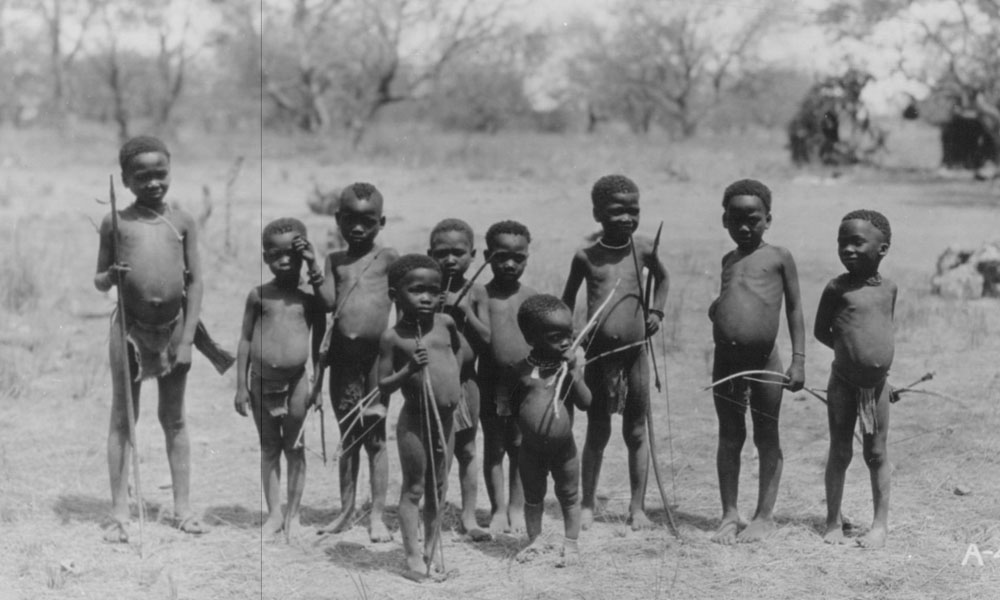||Khau‡goab and Aa‡goab (Twee Palms)
- Hunting memories -
At ||Khau‡goab, there are two palms and two waterholes, ||Khau‡goab and Aa‡goab. The Hai||om say the two waterholes are brothers. Aa‡goab was the waterhole to drink from (aa means “drink”) as its water was superior to that of ||Khau‡goab. ||Khau‡goab was the waterhole to hunt at (||khau means “to shoot with an arrow”, ‡goab means “mud”). The water was too salty for human consumption. Hai||om hunters used to wait in !goasa (hunting shelters at waterholes or animal paths) for the animals to come and drink. The settlement was situated between the two waterholes. The Hai||om from this settlement also went to |Amob (Namutoni) to visit people there and to collect berries, mainly ‡huin (Berchemia discolour, bird plum), in that area.
Hans Haneb demonstrating how to use a bow and arrow Photo: James Suzman, 2003
When he was a child, Hans Haneb often visited his kin here. During these visits, he was taught by the older, experienced hunters how to hunt at ||Khau‡goab. The various arrowheads would have been explained to him. He would have been given a !gaab, which was intended for young, inexperienced hunters. If by accident the young hunter injured himself or another person, the !gaab could be pulled out of the flesh without causing extremely severe injuries.
At approximately 15 cm in length, the !amoab was the largest of the arrowheads. It was used without poison. The !khore-oas was the smallest, and was used with poison. The ‡giis had two points, and was used to break bones.
Hai||om children in the 1920s Photo: National Archives of Namibia (Denver Africa Expedition Collection)
Hans could recall many hunting experiences that took place at ||Khau‡goab. Once, he wanted to shoot a kudu, but he became so tired that he fell asleep while he was waiting for one. When he awoke, he was looking straight into the eyes of a Kudu, and at first was too surprised to react and shoot. Once he had recovered, he shot the kudu with a poisoned arrow, and it ran away. The following morning, he and some others tracked it and found it where it had died. They cut up the carcass and brought the meat back to the settlement.
On another occasion, he went to ||Khau‡goab to wait for prey in a !goas. The next morning, a wildebeest approached from the side. In order to give the headman of the area the opportunity to shoot it, Hans held back, but the animal got the wind of the old man, and started to run away. At that point, Hans put practical considerations ahead of courtesy and shot it dead.


